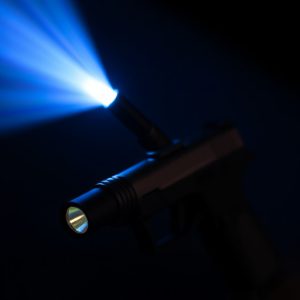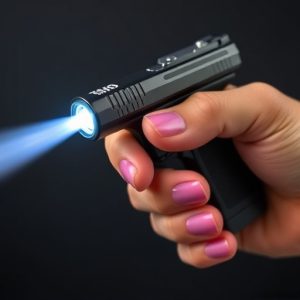Pen Stun Gun Safety: Preventing Accidental Discharge through Mechanisms & Training
Pen stun guns, despite their compact design, pose risks due to user error like jostling or lack of s…….
Pen stun guns, despite their compact design, pose risks due to user error like jostling or lack of safety protocols. Accidental discharge can be mitigated through proper training, understanding device safety features (manual activation, locks), and implementing preventive measures (storage cases, tactical switches). Legal obligations for responsible ownership, including regular training and awareness, further enhance personal safety.
Accidental discharge of a pen stun gun can have severe consequences. This comprehensive guide delves into understanding accidental discharges, their causes, and associated risks. We explore various types of pen stun guns, highlighting safety features designed to prevent unwanted activations. Physical safeguards, training, and legal considerations are crucial components in minimizing accidents. By examining best practices for responsible ownership, this article aims to enhance safety while promoting the beneficial use of pen stun guns.
- Understanding Accidental Discharge: Common Causes and Risks
- Types of Pen Stun Guns and Their Safety Features
- Implementing Physical Safeguards: Cases and Mechanisms
- Training and Education: A Key Component in Prevention
- Legal Considerations and Best Practices for Responsible Ownership
Understanding Accidental Discharge: Common Causes and Risks
Accidental discharge, especially with devices like pen stun guns, is a critical concern due to its potential for serious harm. Common causes often stem from user error, including accidental activation through jostling or pressure, misuse by untrained individuals, and failure to follow safety protocols. These incidents can lead to unintended consequences, posing risks not only to the user but also to bystanders.
Risk factors are multifaceted, encompassing environmental conditions like wet or slippery surfaces that can facilitate accidental triggers, as well as user inexperience or inattention. Proper training and a thorough understanding of the device’s safety features are paramount in mitigating these risks. By recognizing these causes and implementing preventive measures, users can enhance safety while employing pen stun guns.
Types of Pen Stun Guns and Their Safety Features
Pen stun guns, also known as personal stun devices or electroshock weapons, come in various types, each with its unique safety features designed to prevent accidental discharge. One common type is the manual activation pen, which requires the user to press a button or trigger to deploy the electric shock. These often feature a safety switch that must be engaged manually, preventing unintended triggering and ensuring user control.
Another type is the motion-activated stun gun, equipped with sensors that detect movement before firing. This design aims to prevent accidental activation during storage or transportation. Additionally, many modern pen stun guns incorporate safety pins or locks that disengage when the device is ready for use, further minimizing the risk of accidental discharge. These mechanisms contribute significantly to user safety and are essential considerations when choosing a personal protection device.
Implementing Physical Safeguards: Cases and Mechanisms
Implementing Physical Safeguards: Cases and Mechanisms
One effective strategy in accidental discharge prevention is the utilization of physical safeguards. These mechanisms are designed to prevent unintended trigger pulls, ensuring that only authorized users can activate devices like pen stun guns. For instance, some models incorporate a safety lock or a tactical safety switch, which requires a specific action—like pressing a button or flipping a lever—to disarm before firing. This simple yet robust feature significantly reduces the risk of accidental discharge during transport or storage.
In addition to these, certain advanced pen stun guns employ smart sensors and technology. For example, motion sensors can detect sudden movements, temporarily disabling the device if not in use. Similarly, light-based sensors identify if the pen is tipped or pointed at a sensitive area, automatically locking the trigger until proper handling. These physical safeguards not only protect users from accidental shocks but also deter potential misuse, making them indispensable tools for personal safety and security.
Training and Education: A Key Component in Prevention
Training and education are integral to preventing accidental discharges of pen stun guns. Users must be taught the proper handling techniques, safety protocols, and understanding of their device’s trigger mechanisms. Regular refresher courses can help reinforce these skills, especially for individuals who carry their stun guns daily.
Educational programs should cover topics like identifying potential triggers in various environments, safe storage practices, and what to do in case of an accidental discharge. By empowering users with knowledge, they become more mindful of their actions, reducing the likelihood of unintentional activation.
Legal Considerations and Best Practices for Responsible Ownership
In many jurisdictions, the responsible ownership of a pen stun gun comes with a range of legal considerations. Beyond ensuring compliance with local laws and regulations, individuals should be educated on safe storage practices to prevent accidental discharge. This includes keeping the device locked in a secure case or drawer, especially if children or pets are present in the household. Regular training sessions can help owners understand the weapon’s functionality, safety features, and proper handling techniques, reducing the risk of unintentional use.
Best practices for responsible ownership extend beyond legal obligations. Owners should maintain their pen stun guns in good working condition, regularly inspecting them for any signs of damage or malfunction. Additionally, it is crucial to be aware of one’s surroundings when carrying such a device. Discretion and safety should be paramount, as unexpected situations can lead to inadvertent activation. By adhering to these guidelines, individuals can ensure they are not only compliant with the law but also promote their personal safety and the security of those around them, especially in scenarios where a quick response may be required.
Accidental discharge is a critical concern when it comes to self-defense tools like pen stun guns. By understanding the common causes, recognizing the safety features of different models, implementing physical safeguards, and prioritizing training, users can minimize risks effectively. Additionally, adhering to legal considerations and best practices for responsible ownership is paramount. Armed with this knowledge, individuals can confidently deploy a pen stun gun while ensuring their safety and the safety of others.


